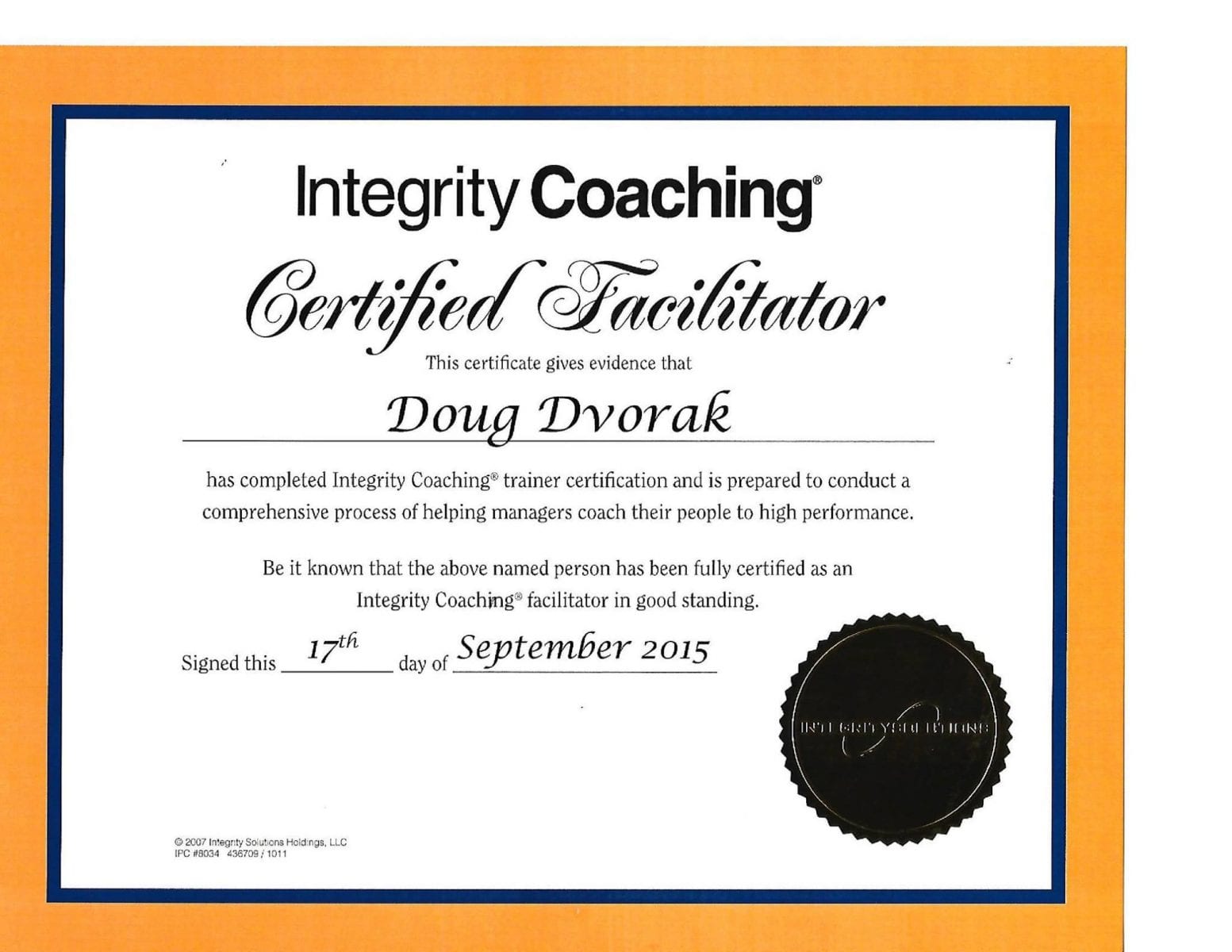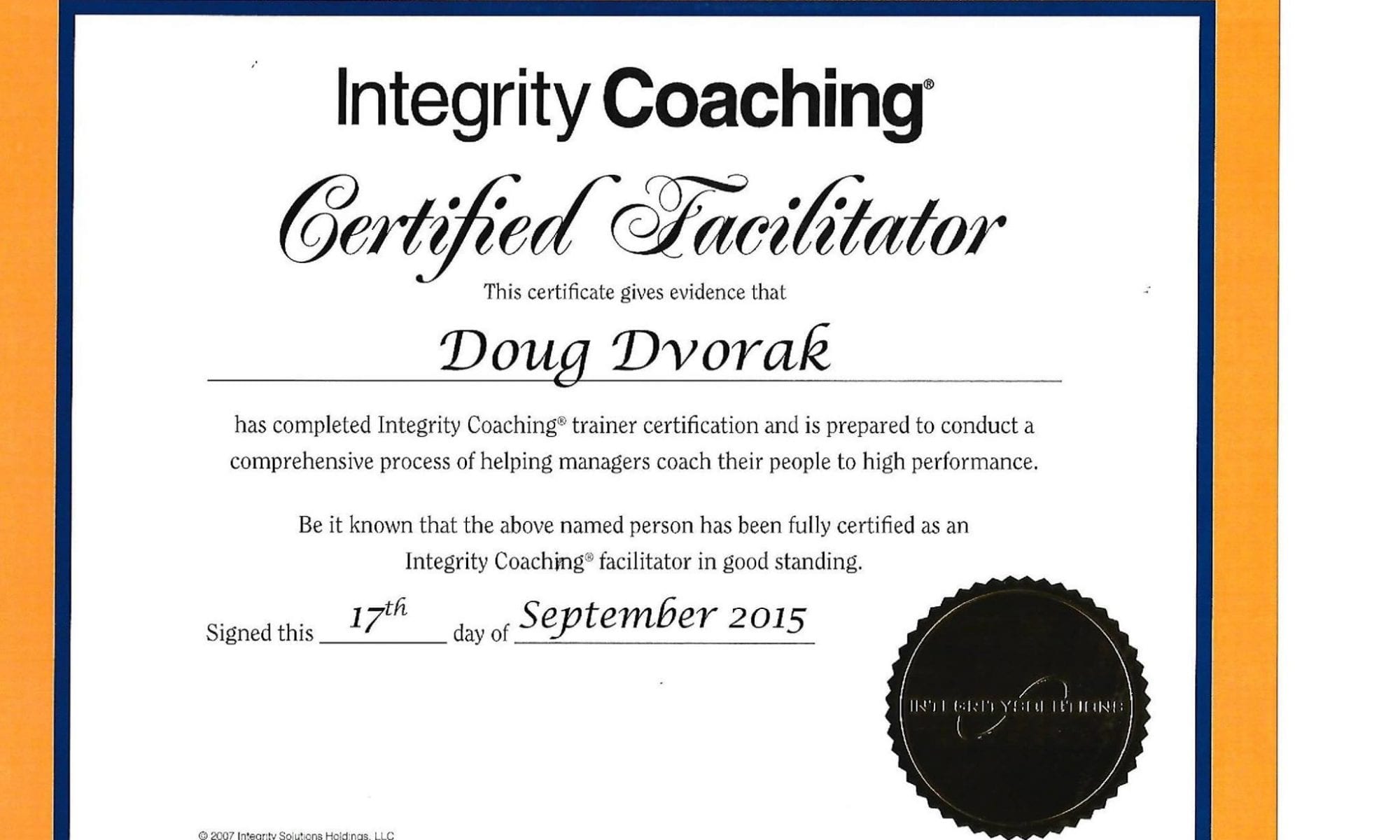Doug Dvorak attended the Integrity Executive Coaching Certification in Scottsdale, AZ. Doug now joins the “Elite Ranks” as a Certified Executive Coach.
Integrity Coaching® is a developmental process that equips managers with the knowledge, skills, and tools to improve sales performance and develop people to their highest potential. It is based on the belief that coaching begins with building people.
Integrity Coaching Includes:
- A simple 5-step coaching system
- Strategies for coaching different Behavioral Styles
- An eight-week follow-up course with accountability for application
- A leadership model that focuses on achieving a balance between developing people and reaching goals
- Strategies for breaking the Law of Limited Performance
Sales Leaders who participate in Integrity Coaching will:
- Develop stronger coaching skills
- Build performance through building people
- Empower people to solve problems and make decisions
- Keep people from plateauing
- Help people develop strong goal clarity
Integrity Coaching Principles
Integrity Coaching is based on the fundamental beliefs that coaching is:
- Building people and helping them build your team and organization
- Identifying potential in people
- Helping people set goals and accomplish them
- Believing in someone at a greater level than they believe in themselves
- Equipping people to become self-sufficient in their growth
- Sincerely caring about the success of others and investing time and energy to promote that success
- Helping others develop a sense of purpose and vision for their professional and personal life
- Working with someone to identify meaningful, tangible, and attainable goals
Timeline for Behavior Change
The objective to Integrity Coaching is to support the consistent application of new coaching behaviors. Coaching processes and tools are introduced in highly interactive one-day seminar.
Skills are reinforced during a structured eight-week follow-up course where participants practice developmental coaching, report on progress, and learn from coaching experiences of their peers. These one-hour follow-up modules can be delivered through classroom, teleconference, or webinar.









